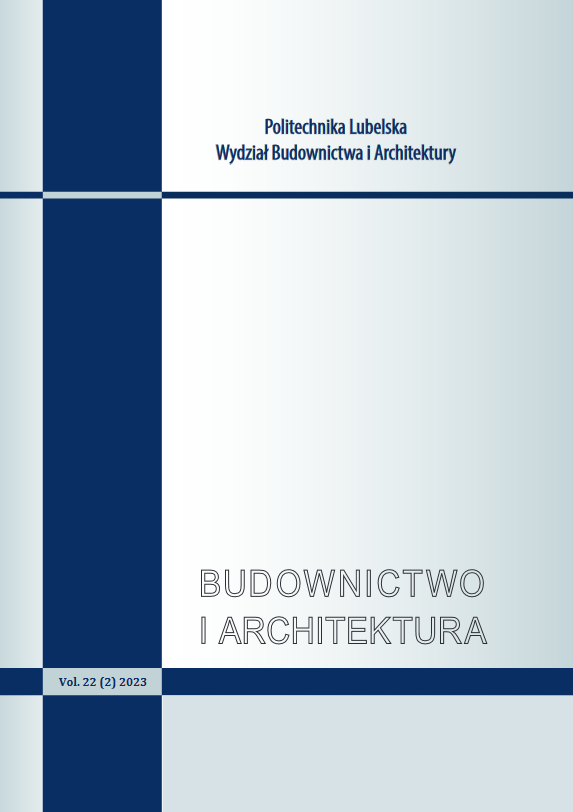Numer 22/2 (2023)
|
Spis treści
Strony
Pobierz
|
|||||
|
Maria Zegar,
Agnieszka Pęska-Siwik, Kamil Maciuk The problem of the modernisation of land and building register in Poland as exemplified by the village of Rejowiec
DOI: https://doi.org/10.35784/bud-arch.3219
5 – 20
|
|||||
|
Słowa kluczowe registry |parcel |land and building register |cadastreStreszczenie The right of ownership is the broadest and one of the most basic property rights, which allows the owner to use and dispose of possessions without the participation of third parties. Therefore, the process of modernising the land and building register (MLBR) is extremely important considering, for example, that the data contained in this register is the basis for the subsequent calculation of public-legal obligations associated with the owned property, such as taxes. According to the current legislation, the data collected in the land and building register (cadastre) on the type of land use in combination with the soil classification of agricultural and forest land, the use of the property, its purpose and other information, are the basis for determining the agricultural, forest and real estate taxes by the competent authority. In Poland, in most cases, we have to deal with a situation in which the data appearing in the register differs from the actual state. Municipal budgets suffer losses because of this, and owners of properties of similar area and value sometimes pay completely different taxes. In this paper, the authors show a practical example of MLBR and the problems existed with it. INFORMACJE O AUTORACH Maria Zegar Akademia Górniczo-Hutnicza w Krakowie |
|||||
|
Rafał Strojny,
Natalia Przesmycka, Zoriana Lukomska Problems of the modernisation of 20th-century healthcare facilities based on the example of hospitals within the Lubelskie Voivodeship
DOI: https://doi.org/10.35784/bud-arch.3578
21 – 39
|
|||||
|
Słowa kluczowe architecture of healthcare facilities |hospital modernisation |hospitals of the 20th centuryStreszczenie Most hospitals in Poland date back to the 20th century. Due to developments in technology and medicine, these buildings need to be adapted to meet modern needs. Due to these needs and the possibility of EU funding for hospitals, modernisation has become an extremely topical subject. The aim of the research was to identify what types of modernisation work had been carried out after 2004 and to identify the main problems associated with this work. The subjects of the study were 38 hospitals from the Lubelskie Voivodeship in which various types of modernisation work had been carried out. Based on the data collected on these hospitals, interviews with selected managers and the authors' own experience of working on the modernisation of hospitals from the 20th century, seven main problems associated with the ten different modernisation works identified were distinguished. The authors formulated ten questions which can be helpful to hospital managers before embarking on building upgrades and that will help them define the main problems, objectives and a more holistic rather than fragmented approach to adapting hospitals to modern requirements. INFORMACJE O AUTORACH Zoriana Lukomska Iwano-Frankiwski Narodowy Techniczny Uniwersytet Nafty i Gazu, Ukraina |
|||||
|
Andrzej Borkowski,
Natalia Łuczkiewicz Landscape Information Model (LIM): a case study of Ołtarzew Park in Ożarów Mazowiecki municipality, Poland
DOI: https://doi.org/10.35784/bud-arch.3547
41 – 56
|
|||||
|
Słowa kluczowe BIM technology |BIM methodology |LIM |landscape information modelling |Ołtarzew Park |Ożarow MazowieckiStreszczenie BIM is penetrating more and more areas of human activity. Currently, it is not only volume or infrastructure objects that are being digitised, but also public spaces such as parks. To achieve this, a number of BIM tools are used to build a LIM model. The LIM model can contain a quantum of information necessary for the park management process. A municipality, for example, can use the LIM model to perform ongoing maintenance or plan rearrangements of the park space. The model itself can serve as a database for the reconstruction of a park in the event of its destruction, e.g. by forces of nature. This paper presents the LIM model of Ołtarzew Park in Ożarów Mazowiecki (Poland), which can serve as a model for building similar models in other cases. In addition to the construction methodology, examples of analyses are presented and the benefits and advantages of using a LIM are described. INFORMACJE O AUTORACH Natalia Łuczkiewicz Politechnika Warszawska |
|||||

